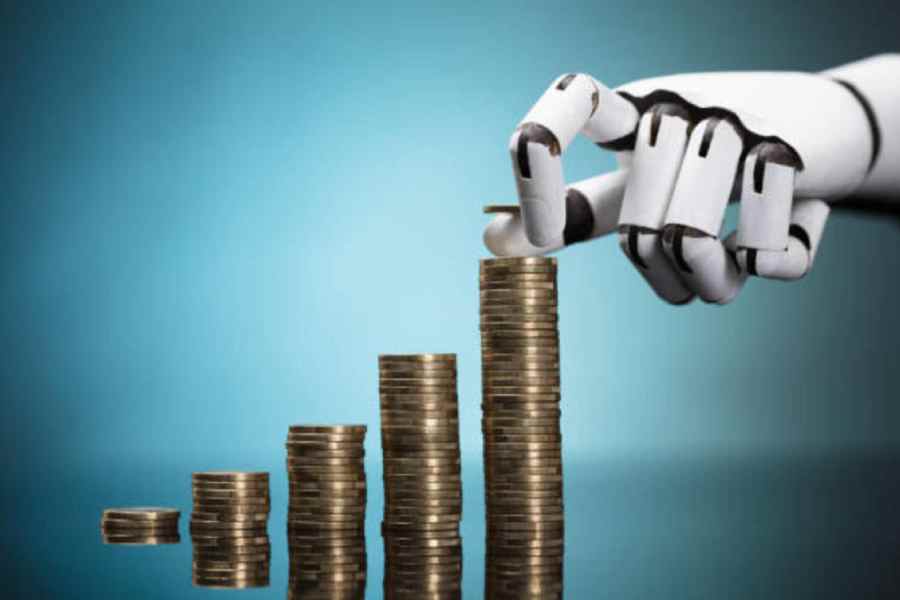Artificial Intelligence and its transformative potential are creating enormous excitement in the world. The machine-driven simulation of human intelligence in its generative form — called generative AI — is capable of creative, innovative tasks and making original content. As a general-purpose technology that mimics or replicates the human mind, generative AI differs from traditional AI that is driven by logic, reasoning, and pattern-recognition rules. The applications and the possibilities of generative AI seem boundless because of its universal nature and the continuous changes and improvisation that are embedded in its adoption, which itself is inherently fast and at scale due to the internet-based medium. Superhuman in expanse, this technological innovation is set to upend most aspects of our lives, ranging from the social and the economic to the political. While the undesirable side includes deep fakes, misinformation and such like, the positive aspects point to a tremendous boost to productivity and growth that many anticipate seeing the quick adoption of large language models such as those powering ChatGPT. Is this overhyped?
The potential productivity gains from generative AI are yet to be fully understood. The range is wide and hope of what this can accomplish is high. The productivity impact is expected to be profound because of the magnitude of tasks that can be done more quickly, with greater precision and efficiency. Early adoption and related experiments show significant productivity leaps for some roles and kinds of work, including those in public goods and services, with better performance and satisfaction; the scope extends to rapid learning and the augmentation of existing knowledge and skills. Some illustrations of the deployment of this brain power are in science and medical research and development, leading to faster innovation and earlier and accurate diagnosis of diseases and disorders, as well as in education and learning and in many customer-interface services, public governance and so on.
The extent of reskilling, redesigning, rescaling, and rejigging of current business and work processes that will happen ahead is unclear at present. The breadth, magnitude, and time span of these changes are also unknown and hard to predict. But these changes could be massive and disruptive because of enormous human imitation embodied in generative AI. Consider that most business heads are either closely examining or being asked to exploit this technology to increase productivity
in their respective fields and roles. At the World Economic Forum in Davos last month, the foremost interest of attendee CEOs and business leads was AI (along with climate change) and what its adoption could achieve.
The other side of productivity, or the increase in value of output with given levels of inputs such as labour and capital over a period, is the impact on employment. The implications are expected to be huge in this realm. Whether the deployment of AI will drag this down and trigger reallocations across segments and working groups is a critical issue. The outstanding difference of this technological innovation, unlike past waves such as information technology and communications or automation that affected low-skill, low-earning jobs in manufacturing processes and services industries, is its disproportionate incidence upon jobs requiring higher order skills, especially those oriented to cognitive tasks.
Net employment outcomes of technological innovations are hard to measure. However, churning and disruption following capital substitution with displacement of labour have been routinely observed. In one of the earliest aggregate assessments, the International Monetary Fund examined the potential labour market impact of the AI revolution across countries; the exercise included supplementary and replacement effects of AI adoption. It found that almost 40% of global jobs are exposed. The disaggregated exposure is skewed towards the advanced economies in which as many as 60% of the jobs may be impacted; this is explained by their comparatively bigger services sectors and larger skilled employment profile, features that also position this group more advantageously in benefiting from AI adoption. Exposure of the emerging market economies, including India, equals the world average of 40%; for now, the middle-to-low-income countries are unlikely to witness similar and significant disturbances in total or specific types of jobs. Depending on infrastructure and skilled workforce levels amongst other features, an AI-readiness index constructed for individual countries shows a mid-position for India that has a large services segment for its stage of development.
The distributive impact is closely related. The substitution of capital for labour points to increased concentration of wealth and power or higher inequalities, at least initially. Because of their initial advantage and early adoption by advanced nations, inter-country inequalities are likely to increase. Likewise, within-country inequality is also visualised to widen as AI adoption complementarities are positively associated with incomes — skill acquisition takes time, such as years spent in education and learning, whereas quick adoption widens the demand-supply gap for those already skilled, pushing up their wages. Some playout of this effect has been visible in India following the pandemic: spurred by rapid growth of the AI-based research and development models, global capability centres have drawn skilled workers away from the outsourcing-based, domestic information technology companies.
Optimists uphold that the productive deployment of AI will eventually increase prosperity and well-being universally, as had happened with electricity or telephones. A few surveys by experts suggest that generative AI impacts will be disruptive, heterogenous, increase uncertainty on the returns to investment in education until the innovation becomes part of our lives, with a likely increase in income inequality. If productivity gains turn out to be robust, leading to higher growth and incomes, the increased demand for work could outweigh the negative replacement effects. Then too, if the productivity-boosting capabilities of AI are assured, affordability could be a constraint for poorer or resource-strapped countries: technologies as smart as this one require enormous skills and capital investments.
These possibilities are all up in the air. What can be said is that the AI technological innovation, which has the potential to increase productivity and growth with significant implications for employment and distribution, follows on the heels of a series of far-reaching changes compressed in a short span after the Covid-19 pandemic. That itself triggered or accelerated signal shifts, such as clean energy transition and digitisation, while poverty and inequality increased. Unexpected geopolitical events then upset global trade arrangements, causing fragmentation and the restructuring of production chains. All fundamental disturbances raise the uncertainty levels of our times. Technology, along with human capital, research and development and sectoral shifts (from low-productivity agriculture to higher-productivity manufacturing in the process of economic development), is a known source of productivity growth. Hope should outweigh hype in this case.
Renu Kohli is an economist with the Centre for Social and Economic Progress, New Delhi










